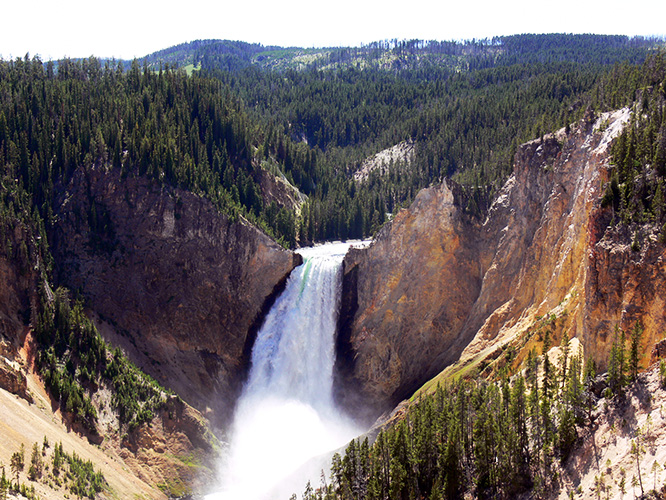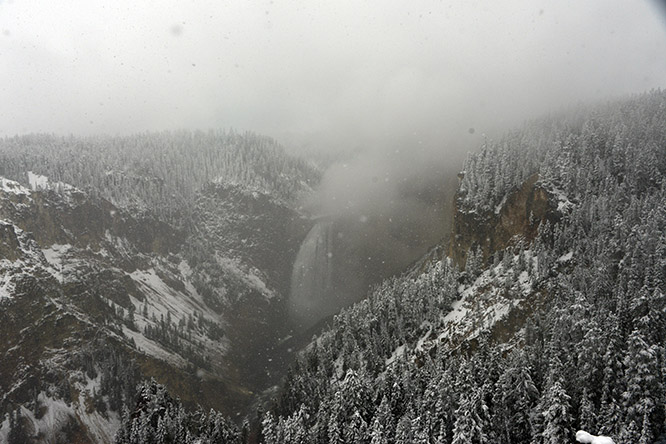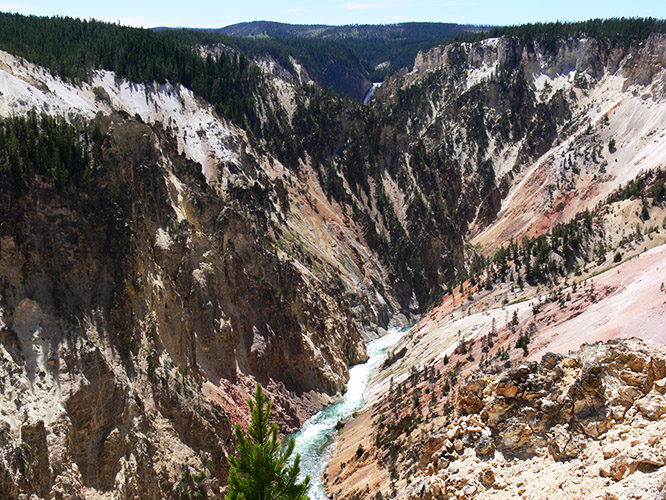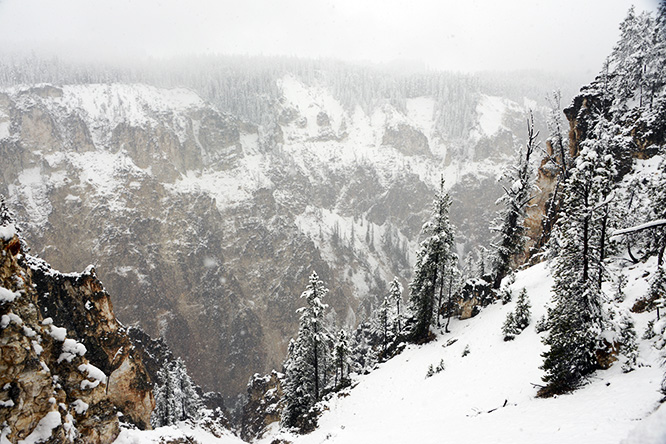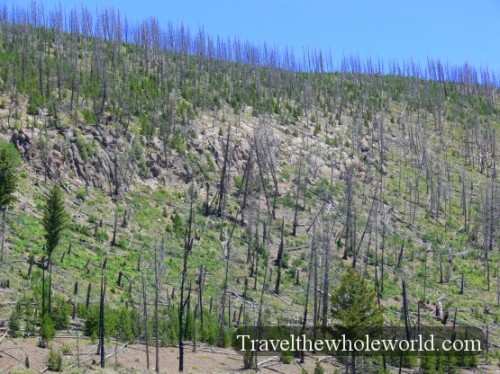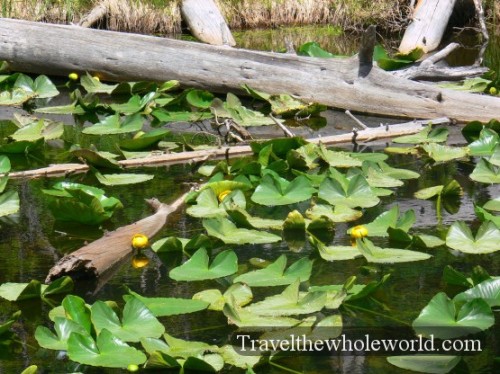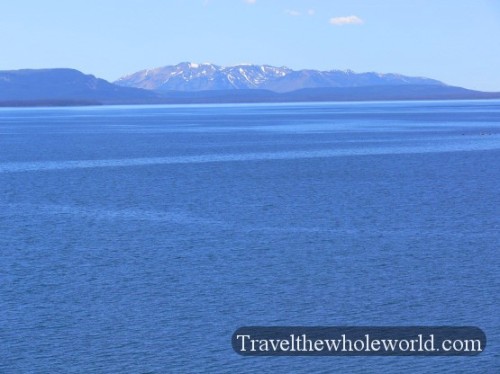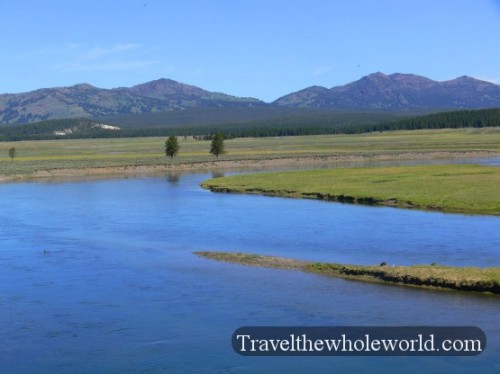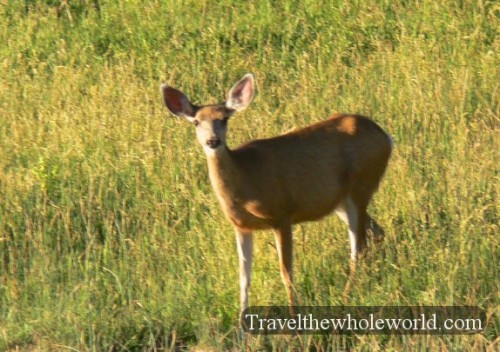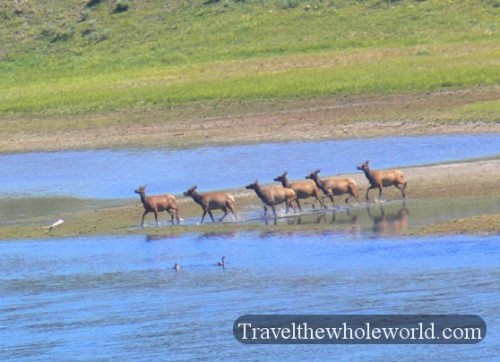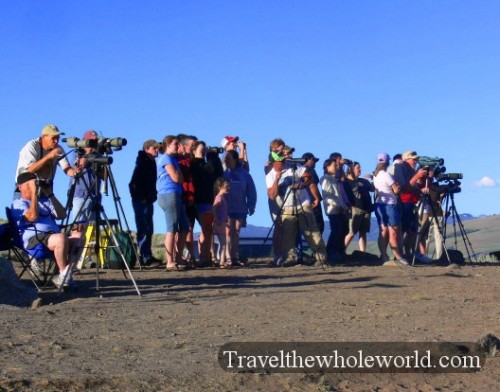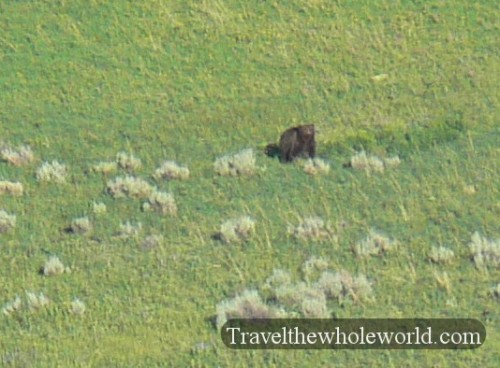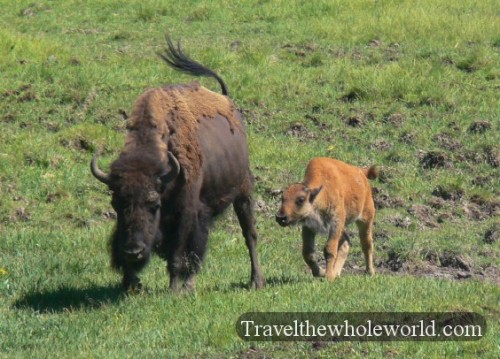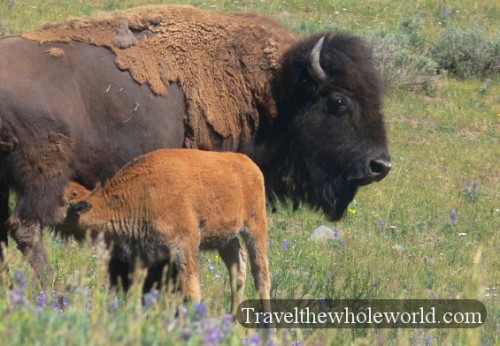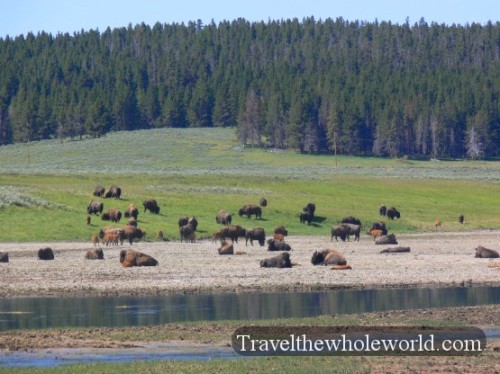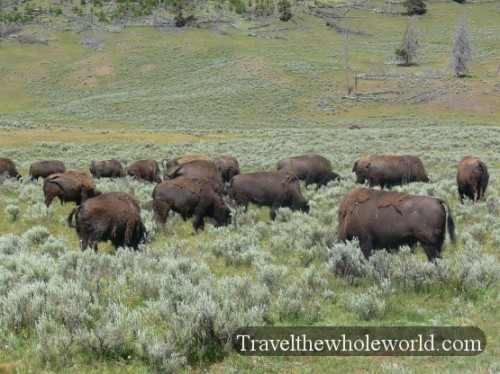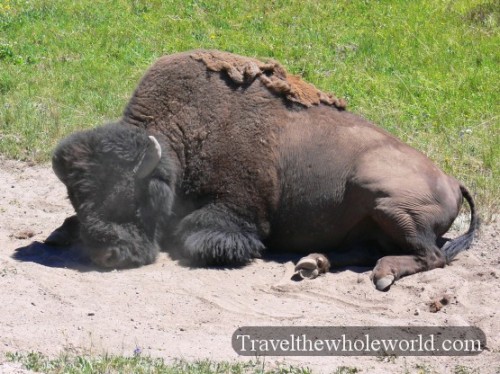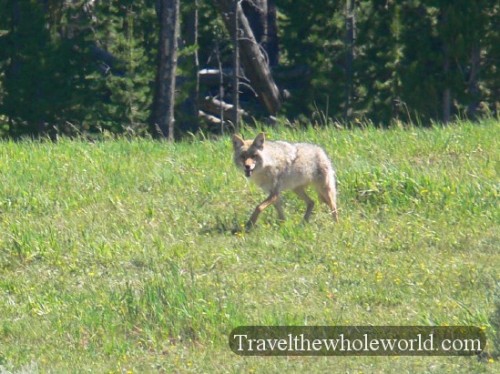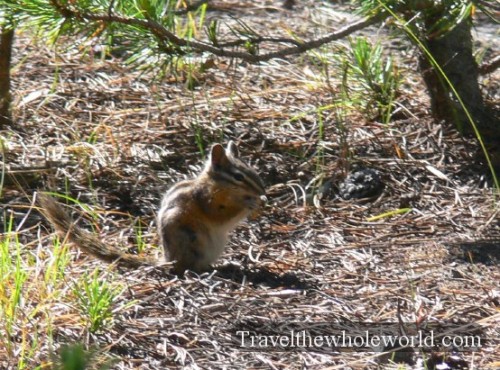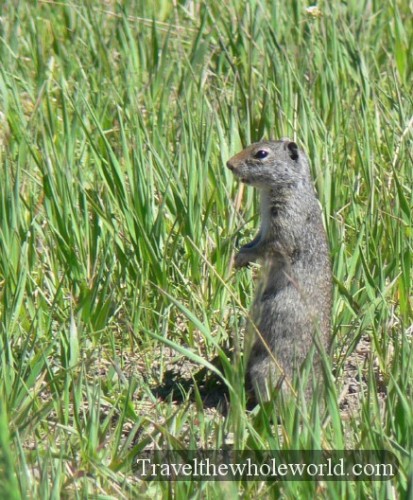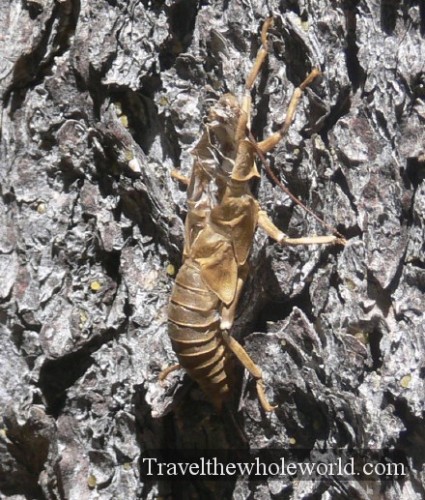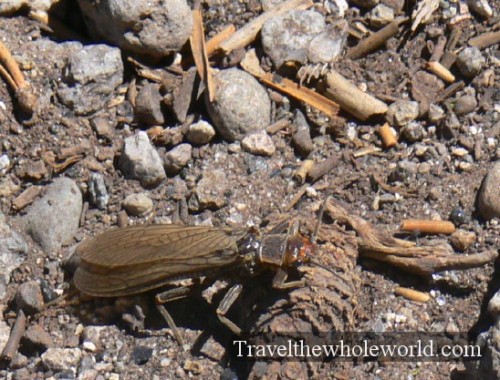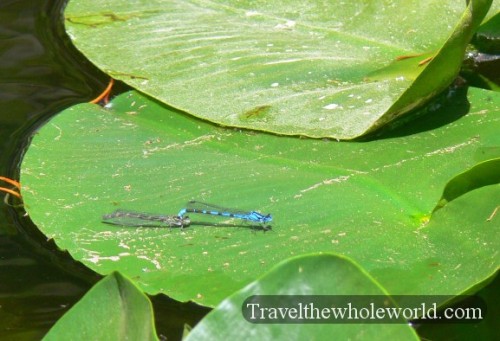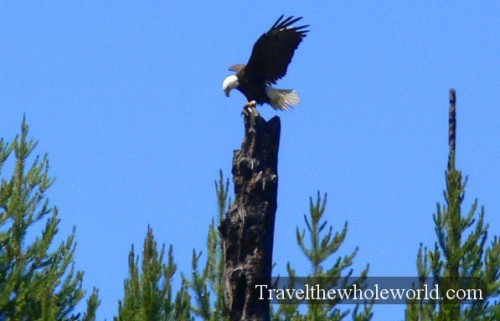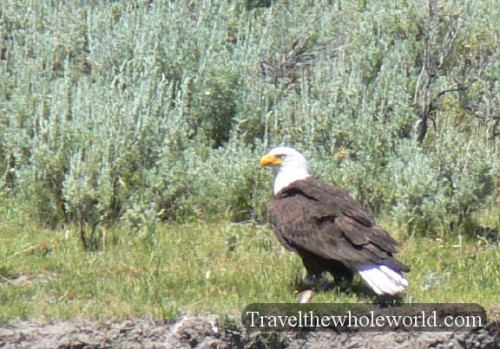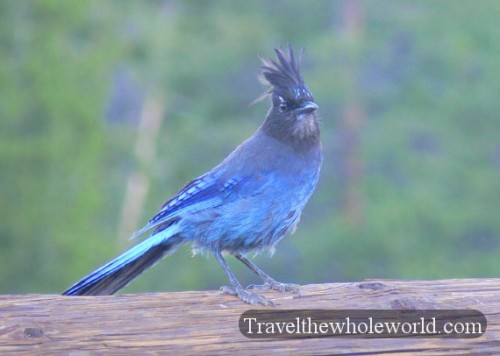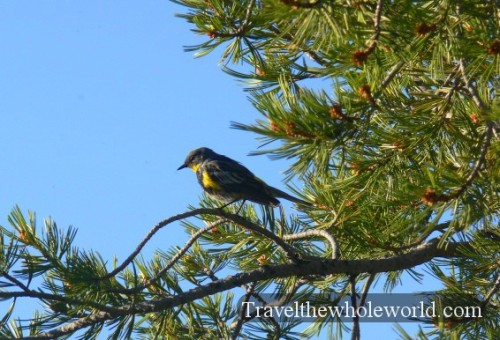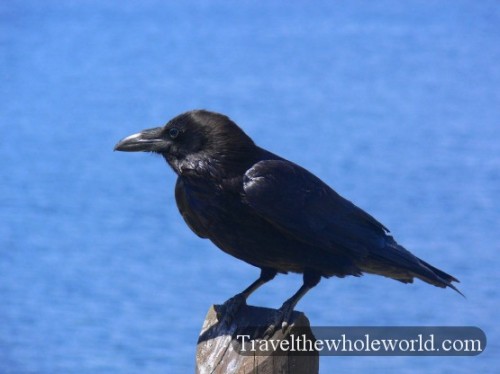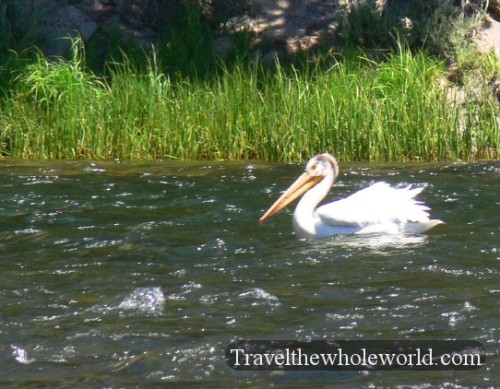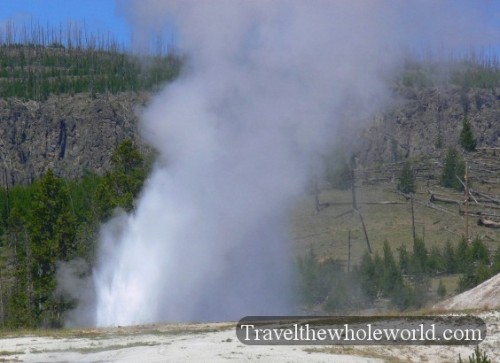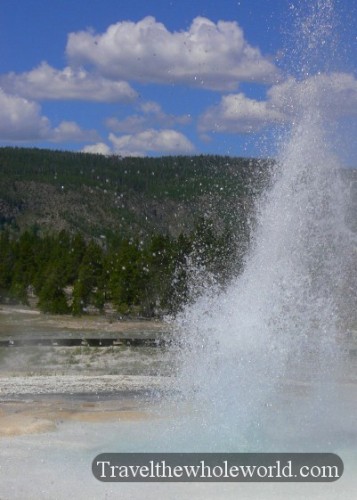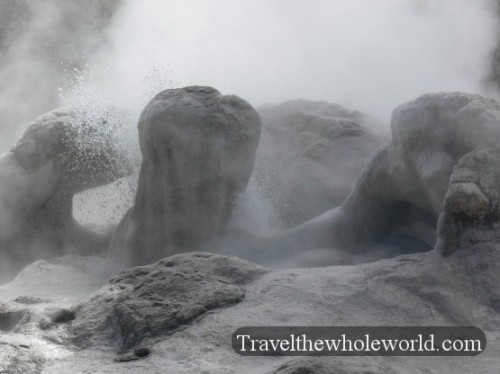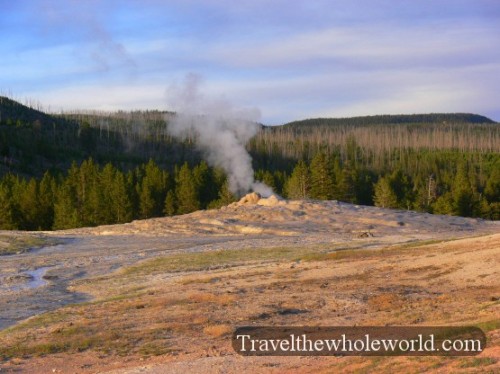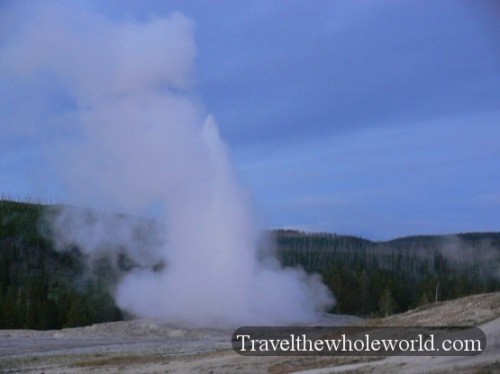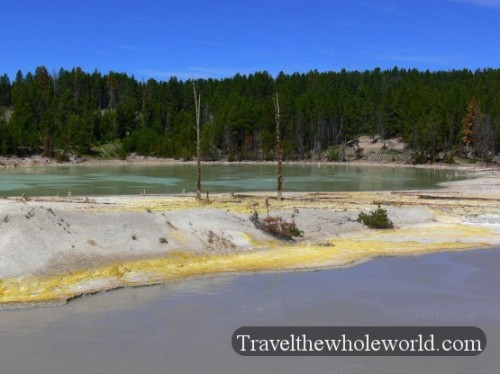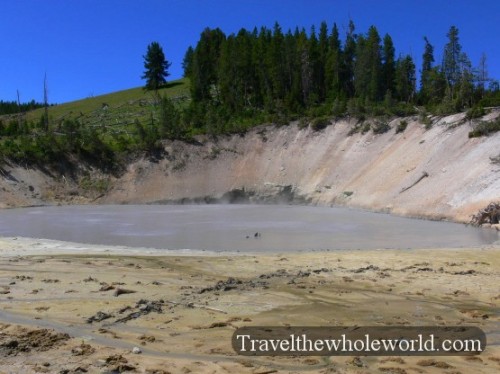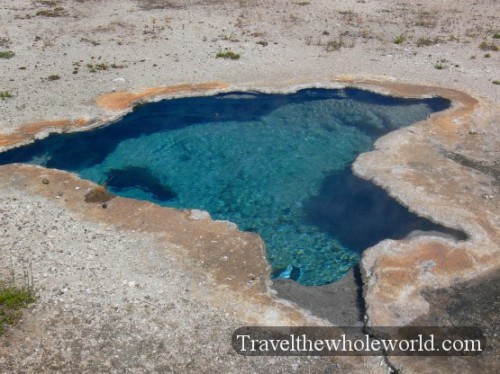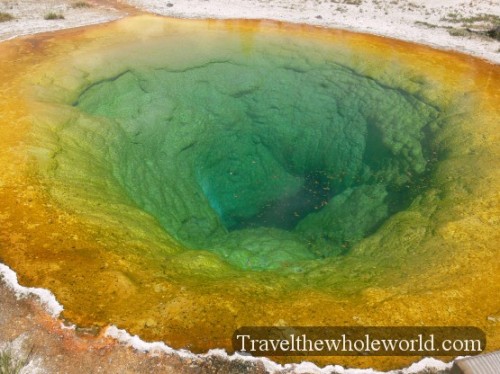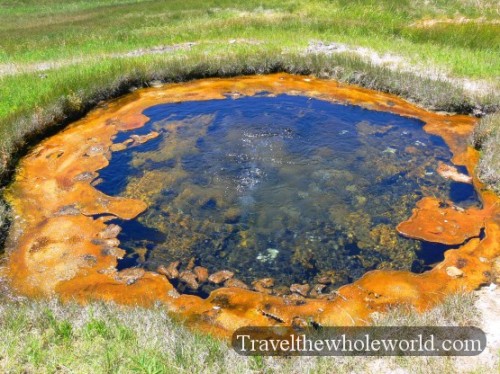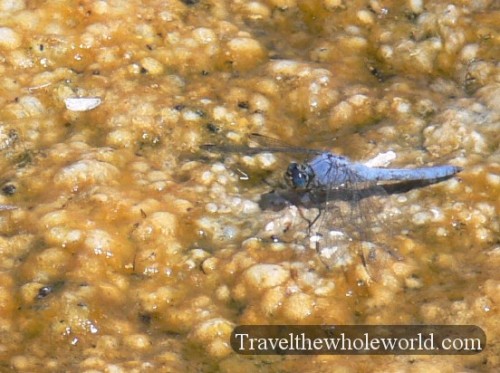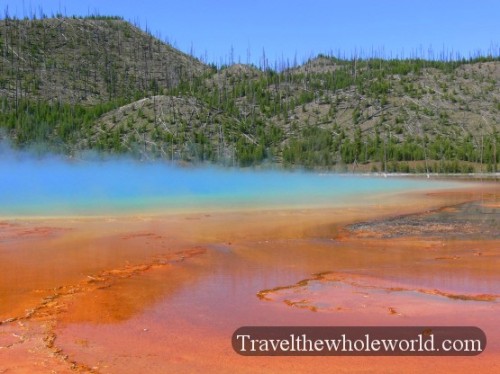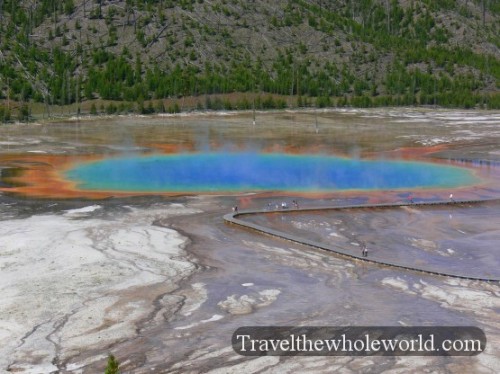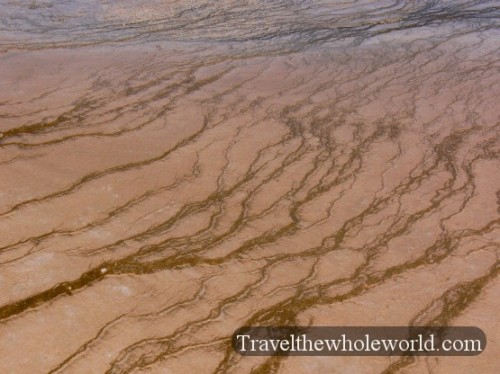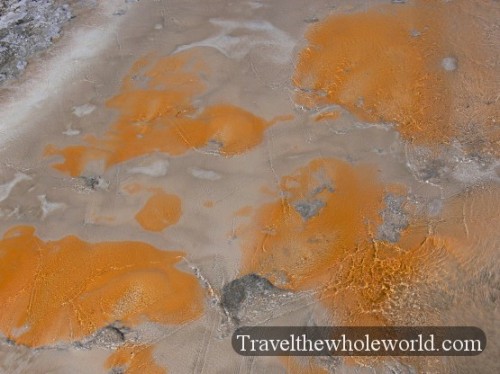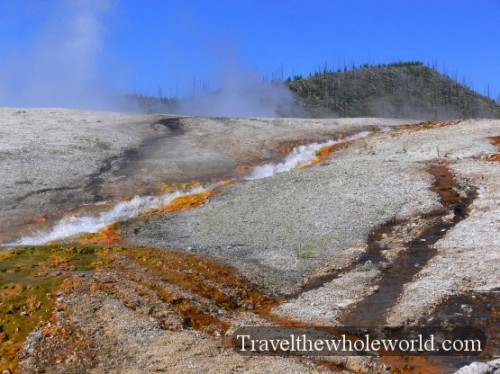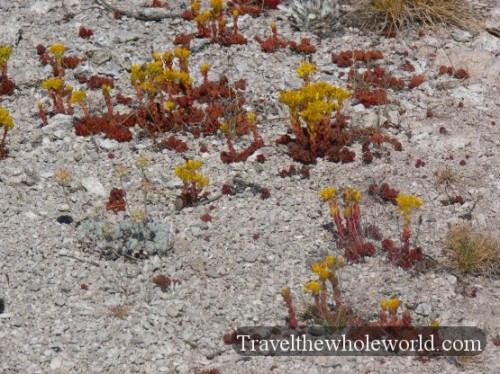Visiting Yellowstone
As the world’s first national park, Yellowstone is famous around the globe for its natural beauty, wildlife, and thermal activity. Yellowstone’s natural beauty is made up of dozens of waterfalls with some over 300 feet (100 meters) in height, large lakes and rivers, as well as thick forests and canyons. The park is also one of the best places in the continent to go on an American ‘safari’, as it is filled large animals from moose to the giant grizzly bear. On top of all this, there is no other place in the world that has as many geysers and hot springs as Yellowstone! Several of the geysers erupt within 90 minutes, so anyone with the patience to wait around is guaranteed to see geothermal activity.
Yellowstone is famous for its large waterfalls found throughout its borders. One of the most famous places in Yellowstone is upper and lower falls. I visited Yellowstone twice in my life, and the visits were nearly a decade apart! The first time I came to Yellowstone I used an older camera, and assumed on my recent trip I’d take way better photos. With a late summer snow storm I found it difficult to get any decent shots, but now I can show photos from different times of year. The first time I had visited I went in June, the second time I went in mid September where snow was already coming down hard. The photo above shows the Lower Falls on my first trip, below you can see what it looks like during a snow storm 10 years later.
The river leaving the Upper and Lower Falls has carved out of the earth what many call the Grand Canyons of Yellowstone. Having visited the Grand Canyons of Arizona I can promise they are not comparable in anyway. However, Yellowstone’s canyons are of course still an impressive site. The photo above shows a clear day over the canyons. Once again these two photos are ten years apart.
Many trees in Yellowstone look dead due to forest fires. Of course, park rangers and firefighters do their best to prevent fires, but a forest fire is something that occurs normally in nature. On the left are dead trees which is a common sight in Yellowstone. On the right are some large lily pads found in some of Yellowstone’s ponds.
Resting close to 8,000 feet, Yellowstone has one of the highest lakes in the continent. Many people go out into the lake and canoes, or some go fishing in larger boats. I even saw a few taking a quick swim in the summertime despite how cold the water is. The lake is filled with many large species of fish, the cut-throat trout being the most common. The water flowing out of the lake is known as the Yellowstone River, and winds itself out of the park heading west.
On the left is a mule deer which are common in Yellowstone and all over North America. A new animal to me was the pack of elk who were trying to cross a river. Spotting a male bull elk or bull moose is the real prize.
Many visiting the park hope to spot a Grizzly bear, one of the largest and most dangerous animals in the continent. I met one person who had come to Yellowstone six times and had never seen one before. Luckily on my first day I spotted one out in the distance. On the left are a bunch of tourists with their high tech cameras and binoculars trying to zoom in on a spotted grizzly bear. The bear was extremely far away, so the picture on the upper right was the best I could do. The bear was probably about a mile away, and it was zoomed in about 20 times in that photo. Hopefully you can make out the bear on the lower right hand side of the photo.
Long ago millions of bison used to roam the western part of the country but their numbers were brought down by poachers close to extinction. After efforts by the U.S. government and other organizations, their numbers have significantly increased, and they are no longer on the brink of extinction. In Yellowstone alone, an estimated 3,000 bison roam the plains. The two photos above show some bison with their calves. Below are the large herds of bison seen throughout plains of Yellowstone.
Above you can see another large bison that is sleeping. On the right is a coyote running through a field. Yellowstone also has a large population of wolves and coyotes, unfortunately I didn’t come across any wolves.
Above are two common rodents that I saw while visiting. The one on the left is a common chipmunk, on the right is a ground squirrel that makes its home through dug out tunnels, instead of in trees.
Because of Yellowstone’s cooler weather and high altitude, there are no where near as many bugs here as you would find in a place like Florida. The most common bug I saw here seemed to be large horse flies. On the upper left is a large shell left behind on a tree from a cicada. I’m not sure of the huge roach like bug in the photo above, but I saw dozens of them along banks of a river. The ponds I visited in Yellowstone had several bugs, but I never came across any mosquitoes. On the left are two dragon flies resting on a lily pad.
Bald eagles live in all 50 states, but until I visited Yellowstone I had never seen one out in the wild. The bald eagle seen above was actually seen within 30 minutes of entering Yellowstone, giving me a great first impression of the park. I saw the one above on the western side of the park, and later saw another one flying above Yellowstone Lake.
The two birds above are some new species that I hadn’t seen before. The bird on the right is still unknown, but on the left is a Stellar’s Jay (Thanks Jennifer!). I missed a picture of the most beautiful bird was, which had a solid bright blue body, (not the one in the upper left). Of course everyone known the black bird on the lower left is the raven. On the lower right is an American white pelican cruising down a river.
Geysers are seen in different parts of the world, such as Iceland or New Zealand for example. As I mentioned before though, Yellowstone has the biggest concentration of them anywhere on earth. Some are constantly erupting, while others remain dormant for several hours. Above are two very active geysers, one very large and one small.
On the left are two other geysers that are erupting at the same time. The geyser to the right was my favorite because of its strange formations in the center, I called it the alien geyser since it looks like an alien landscape.
This geyser above is one of the most famous in the world, and definitely the most popular in Yellowstone. It’s known as Old Faithful, and usually erupts every 90 minutes, but sometimes as early as 20 minutes and other times as late as several hours. On the left you can see Old Faithful smoking in between eruptions, on the right is going off, sending hot water up into the sky, sometimes going as high as 150 feet!
In between geysers and hot springs are mud cauldrons and volcanoes. The pressure underground pushes up water that mixes with the earth forming scalding hot mud pools.
Maybe most people would consider the hot springs boring, since there is not activity here, but I found them pretty interesting since they are like a small door leading into the center of the world. Both of the water in springs above are extremely hot. The one on the left is so hot that no type of bacteria can live in it, so it remains crystal clear. The one of the right remains clear in the middle, but on the edges where it is cooler, you can see a type of bacteria has grown. The hot spring on the right is known as the Morning Glory Hole.
The hot spring on the left is different from most since it is immediately surrounded by grass. Usually the land surrounding the hot spring is too hot to support any normal plant life. On the right in a different spring, is a dragon fly resting on the floating bacteria that can survive in hot water.
My favorite hot spring seen above is the Grand Prismatic Spring located near the Old Faithful Geyser. It is the third largest spring in the world, next to two larger springs in New Zealand. Like the other springs, the deep orange color surrounding the spring is made from bacteria, while the inner part is solid blue because of its purity.
Most of the hot springs lose a lot of water due to evaporation. Because they are constantly being supplied from underground, some of them receive enough water to create a run off. On the left is a runoff from the Grand Prismatic Spring. It looks like a picture from an airplane, but its actually only a foot off the ground. Another spring’s runoff supports orange patches of bacteria.
These surrounding photos are of some larger spring runoffs that created some small creeks. You can see in the pictures above that the creeks are still very hot after they left the spring and are steaming. On the lower left is where a particularly hot spring meets a cold river in Yellowstone. On the right are some strange plants growing next to the springs runoff. They are only a few inches in height, but seem to be the only plant that has adapted to the soil.
